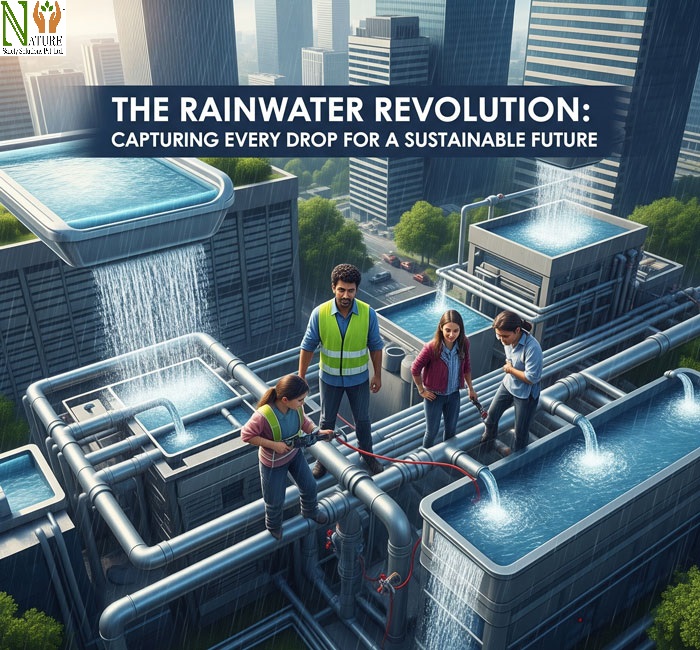Water is one of our most important natural resources. But in many places, water is running out. Rainwater harvesting offers a smart and easy way to collect water that would otherwise be lost. It helps homes, farms, and cities become more water-secure. This method is simple, cost-effective, and good for the environment.

What is Rainwater Harvesting?
Rainwater harvesting means collecting rain when it falls and saving it for later. It is one of the oldest water-saving methods known to humans. The water is usually collected from rooftops or open spaces. Then it is passed through a filter to remove dust and leaves.
Finally, it is stored in tanks or allowed to soak into the ground. The stored water can be used for many purposes, like washing, gardening, irrigation, and cleaning. If cleaned properly, it can also be used for drinking and cooking.
Why It Matters
Rain is free and pure, but we let it go to waste. In urban areas, rainwater flows into drains and is lost. In rural areas, it runs off the land and causes soil erosion. By harvesting rainwater, we make use of every drop. This reduces the need to pump groundwater.
It also helps during dry seasons when there is less water. With climate change causing unpredictable rainfall, collecting rain makes our water supply more stable. It also reduces our dependence on expensive water tankers or distant sources.
Where It Helps
Rainwater harvesting can help everyone. In homes, it provides water for daily use. In schools, it ensures water for toilets and cleaning. In agriculture, it provides extra water for crops. Many farmers build small ponds or check dams to store rain.
This helps increase soil moisture and crop growth. In cities, rainwater harvesting systems reduce flooding by slowing down stormwater runoff. It is also useful in factories, hospitals, and large buildings to cut water bills and save resources.
How It Works
A typical rainwater harvesting system is simple. Rainwater first falls on a catchment surface, like a roof. It flows into gutters and downpipes. A first flush device removes the dirty water from the first rainfall. The clean water then passes through a filter.
After that, it is stored in a tank or allowed to go underground through recharge pits or wells. Stored water can be drawn using a tap, pump, or hand pump when needed. Maintenance is important—filters and tanks must be cleaned regularly.
Simple System, Big Impact
Even a small house can collect thousands of litres of rain each year. That water can be used for washing clothes, cleaning floors, or watering plants. Large buildings and institutions can save lakhs of litres each year.
This lowers their water bills and makes them self-reliant. Groundwater levels also improve, which benefits nearby wells and borewells. Over time, these small efforts lead to big environmental and financial gains.
Challenges and Support
Rainwater systems need a good design and regular care. If not cleaned, water may become dirty or breed mosquitoes. Initial costs for setting up tanks, pipes, and filters may feel high. But many governments and NGOs provide financial help.
In some places, building laws now require rainwater harvesting systems. Training programs and awareness campaigns also help people understand the benefits. With the right support, anyone can set up a working system at home or work.
A Step Toward the Future
The Rainwater Revolution is about smart choices. It teaches us to respect water and nature. By collecting rain, we protect our future. We also reduce pressure on water supply systems. Every drop saved helps reduce the risk of water crises.
More people are now joining this movement. From schools and farmers to city residents and companies—everyone can take part. If we start today, we can create a better tomorrow. Rainwater is a gift from nature. Let’s not waste it.
Also read:-
